Been There, Learnt That: Are ‘Sumo Girls’ Equal But Different?
Women Can Do Sumo, And They Do It Damn Well
As a mother of three children who all played sumo when growing up, Japan's controversy surrounding women's role in sumo feels more personal than it perhaps should.
Crouching in the sumo ring with their fists resting on the ground, their eyes lock in steely determination as they size each other up. The watching crowd holds its collective breath—who will emerge victorious? The referee shouts, “Hakkeyoi!” and they’re off, using every ounce of strength to try and knock their opponent out of the ring. Perhaps you’re imagining a glorious sumo tournament by now. But these wrestlers aren’t mega-sized men sporting chonmage topknots and dressed in mawashi belts; they’re ponytailed little girls in their PE uniforms. Welcome to the world of kids’ sumo, where the girls are every bit as determined as the boys—perhaps even more so.
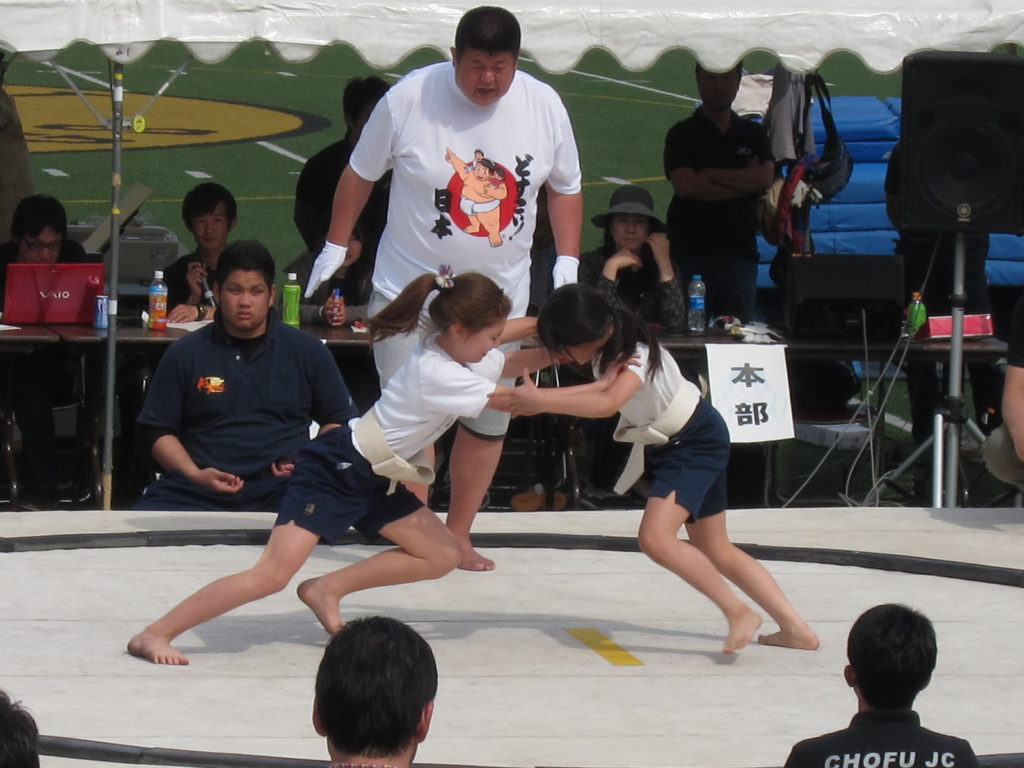
Women & sumo: Japan’s greatest “non-match”?
The reputation of Japan’s revered sumo world has been tarnished by several scandals in recent months, and the latest controversy surrounds one of the sport’s fundamental principles—that women are not welcome in the sumo ring. Sumo has ancient ties with Shinto, Japan’s native religion, and was originally performed at festivals as entertainment for Shinto gods. Over time, complex purification rituals developed and this is where the ban on women comes in: By dint of the blood associated with menstruation and childbirth, women became considered “unclean.”
This practice came under scrutiny during an event on April 4th in the city of Maizuru, Kyoto. When the local mayor collapsed in the sumo ring in the middle of a speech, a number of concerned audience members rushed over to offer assistance, including two female medical professionals. However, on seeing the women, the referee quickly made a public announcement for women to leave the ring.
The referee’s behavior was widely criticized, especially by foreign media, for putting what some people consider an outdated tradition ahead of a person’s safety. The Japan Sumo Association issued an apology afterward. However, if the referee hadn’t said something at the time, it is quite likely that sumo traditionalists would have spoken out against women in the ring anyway. The referee was certainly between a rock and a hard place on that occasion.
Even high-ranking female officials are banned from getting inside the ring and so, for example, mayors and other dignitaries are not permitted to award prizes at sumo events if they are women. Just days after the above-mentioned scandal, Tomoko Nakagawa, mayor of Takarazuka, Hyogo Prefecture, was barred from giving a speech in the sumo ring and was instead asked to do so from a podium nearby.
“Female mayors are also humans. I am frustrated that I cannot give this speech on the dohyo just because I am a woman,” she told the audience at the time.
Increasing disappointment and discouragement
While women are unlikely to be welcomed into the sumo ring at the sports’ highest level for the foreseeable future, Japan does have a separate Women’s Sumo Association, with regional and national tournaments being held from upper elementary school age through to adults. Some of these women train competitively with local sumo clubs, alongside the men. There are also community-based children’s sumo events for both girls and boys.
One such event is the “Fuji-Shizuoka Kiddy Sumo,” held a few days after the incident in Maizuru. For the last few years, both boys and girls of elementary school age have competed, but following a call from the Sumo Association, girls were suddenly banned—resulting in a number of disappointed would-be mini wrestlers.
It’s both sad and ludicrous that the caring actions of two women with medical skills lead to the crushing of young girls’ expectations a few days later.
The organizing body is also responsible for adult sumo events in Yamanashi prefecture, and local officials said they had no choice but to respect the Sumo Association’s orders. As for the rationale behind the decision to bar girls this year, the Sumo Association claimed it had nothing to do with the Maizuru incident.
“It isn’t good if girls end up with scars on their faces. This was a safety move and is unrelated to the issue of impurity,” they said, but I doubt many people bought it.

An empty traditional sumo wrestling ring.
The rhetoric about “girls’ faces” is just another example of different standards for men and women in Japanese society, implying that a girl’s “face is her fortune.” Of course, no parent wants their child injured in the sumo ring, irrespective of their sex, but in 12 successive years of watching my own kids compete in regional events, I never saw any child leave with a facial injury. It’s both sad and ludicrous that the caring actions of two women with medical skills lead to the crushing of young girls’ expectations a few days later.
There are no such problems with the annual Wanpaku children’s sumo contest in western Tokyo, which is organized by the local Jaycees, and where all my three children experienced the sport when they were little. As every year, it looks like the committee is gearing up for the 32nd contest this June, which is open to all elementary school children in the city. This usually includes a contingent from a nearby international school.
My family’s years of experience with sumo
Our family’s sumo experience began when our oldest entered first grade. The first-grade boys’ division is always by far the biggest and my 6-year-old promptly took one look at the seething mass of little bodies and declared that he wanted to go home again. At the time, we somehow convinced him to give it a go. He won one bout, lost the next, and that was it. He kept at it every year and eventually finished a creditable fourth in sixth grade, his last year.
When it comes to the girls, there are always far fewer competitors. Perhaps sumo is less appealing to the girls—or their parents—so they are not encouraged to sign up when the flyers are handed out at school. Even if a girl is interested, maybe none of their friends want to do it, so she drops the idea. It takes courage when you are the only one from your school competing.
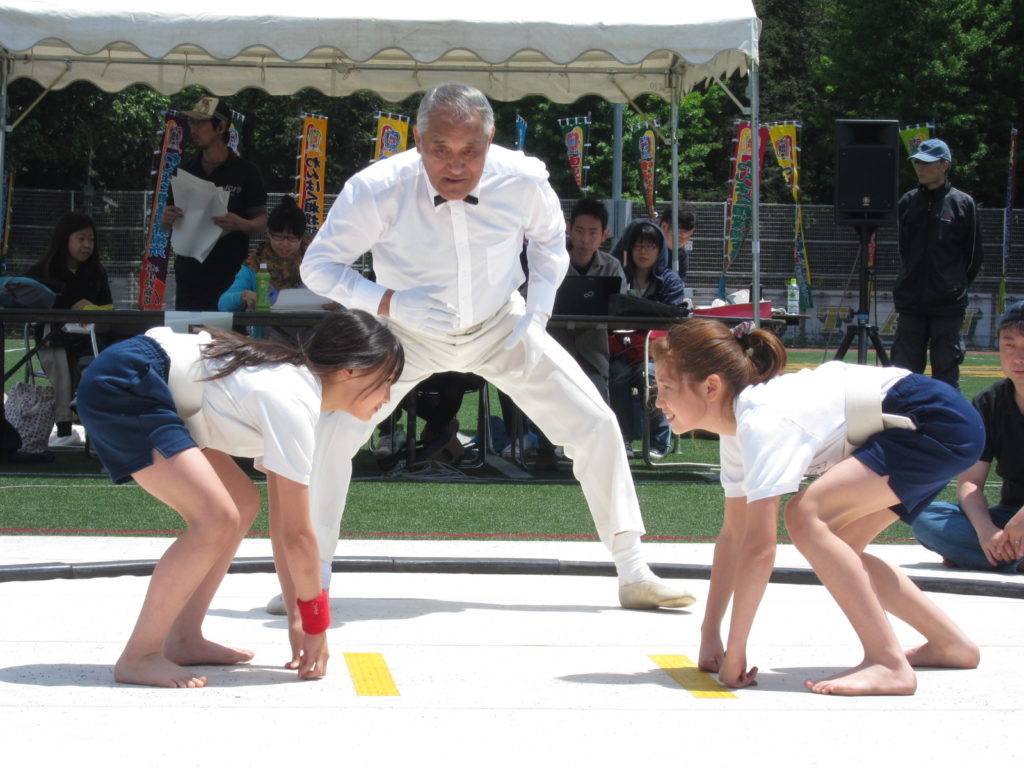
Perhaps some imagine they’ll have to complete in just a mawashi belt, but unlike the boys, the girls keep their PE shirts on. Some years, both sexes get to wear a makeshift mawashi over the top of their shorts just before they step into the ring.
“It can perhaps be a bit daunting for children if none of their friends or classmates are there, but the girls who compete are always very determined and it’s great to see that,” says Masato Hase of this year’s organizing committee.
You see them looking over the roster and trying to work out who their next competitor will be. When they look at each other, it’s less about “Oh, hi!” than “You are going down!”.
My older girl also made her sumo debut in first grade. Occupying the difficult “middle kid” spot between an easygoing big brother and a placid baby sister, Miss 6 was competitive by nature and didn’t like losing. She wasn’t the biggest child in her division by a long shot, but her tenacity proved the key to winning the coveted gold medal. She was hooked!
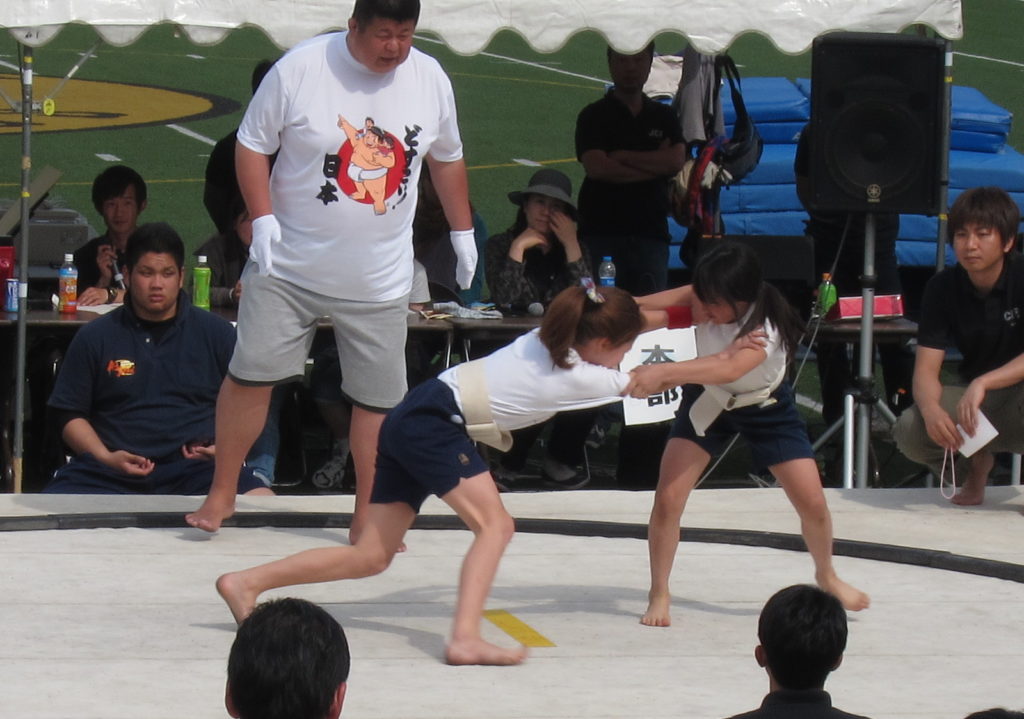
She went to on win another gold and then a bronze, but by fourth grade she was being surpassed in height by nearly all her age mates, bringing an end to her winning streak. By this time, little sister was also competing. Having seen her siblings in action as a preschooler, she took it for granted that she would also compete, winning three golds and one silver in her elementary school sumo career. As for me, I got progressively louder with each annual tournament. It got to the point where my daughter requested that I take the proud parent act down a notch.
Each year, the winning boys from 4th to 6th grade had been given the opportunity to advance to the All-Tokyo sumo finals, but the same chance was not offered to the girls when my kids were involved. I had just assumed there no similar events for them, but Women’s Sumo Association has been running national championships for several decades now.
After placing second in 6th grade, my younger daughter was invited to attend the girls’ all-Tokyo contest when the gold medalist from our city turned it down. Some of the girls in the Tokyo contest clearly belonged to sumo clubs, and my daughter was outclassed, but I was proud of her for giving it a go. According to Hase, the city now routinely sends both winning girls and boys on to the All-Tokyo finals.
As for the “dangerous” aspect of girls doing sumo, I spoke with a representative from the Women’s Sumo Association.
“We’ve been running competitions for over 20 years and I haven’t seen facial injuries among elementary school children,” he noted.
I asked my daughters what they had gained from taking part in sumo as little girls. “Apart from the medals?” quipped my college student older daughter. “It was fun and it felt special because you only see male sumo wrestlers on TV.”
The controversy surrounding women’s role in sumo will not be solved easily and Japan is hardly the only country where ancient traditions govern gender-based rules for certain aspects of life. However, for me and my daughters at least, sumo has brought nothing but good experiences and some very proud mama moments—and yes, a few medals here and there.
“Been There, Learnt That” is a monthly column in which Louise George Kittaka discusses various issues she went through when raising her three children in Japan. If you have any questions for Louise on a topic related to raising bicultural children in or out of Japan, send us an email at editorial@gplusmedia.com or leave us a comment. Louise will answer your questions in her next article.












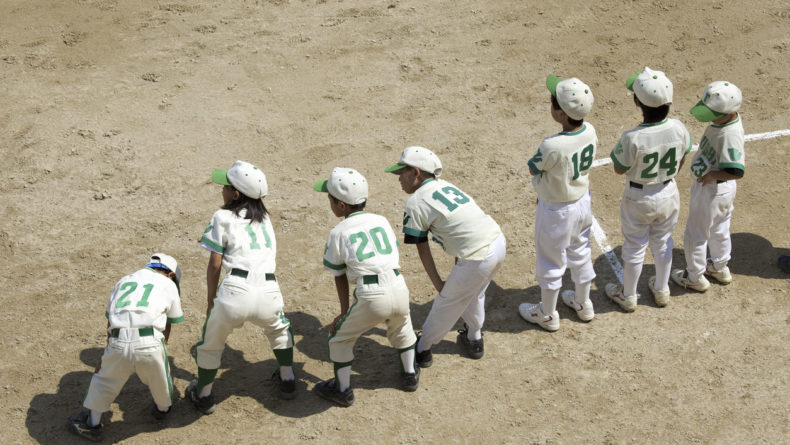

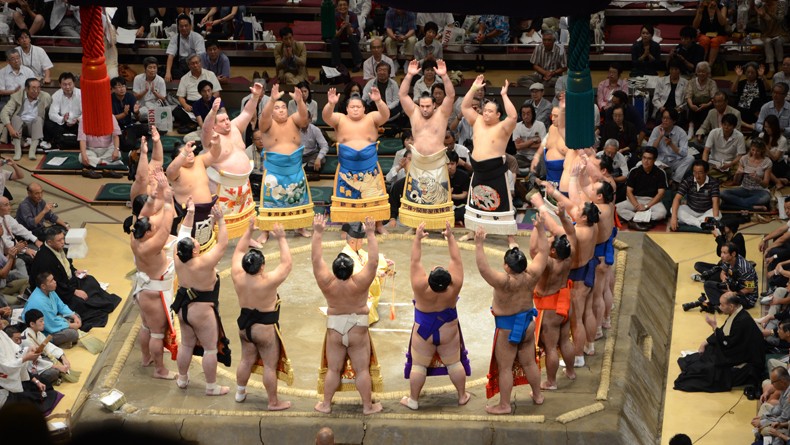
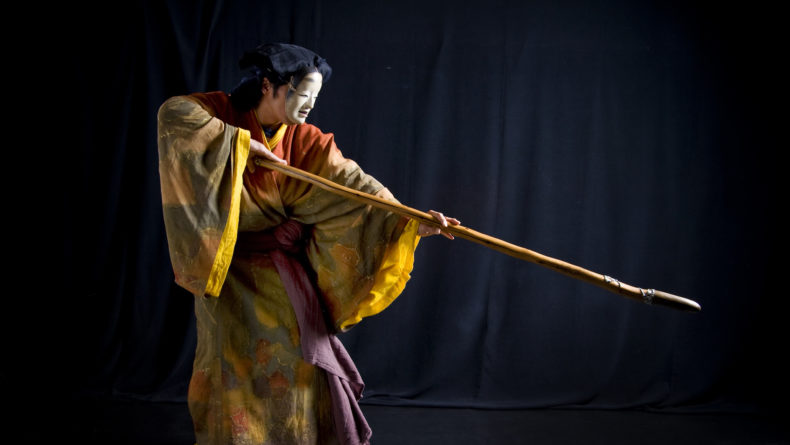
Leave a Reply